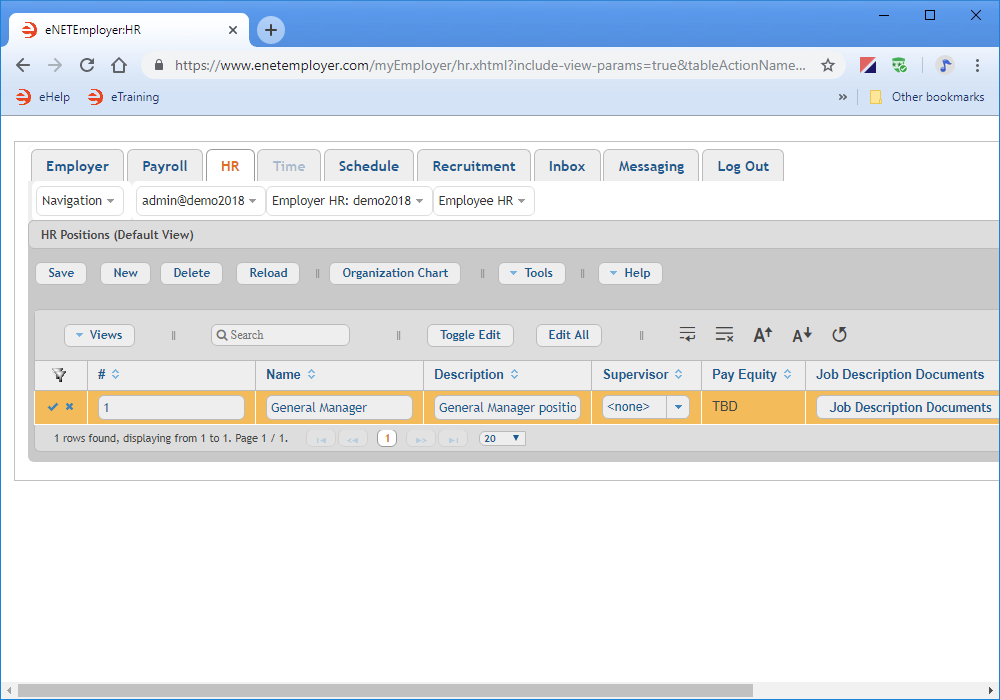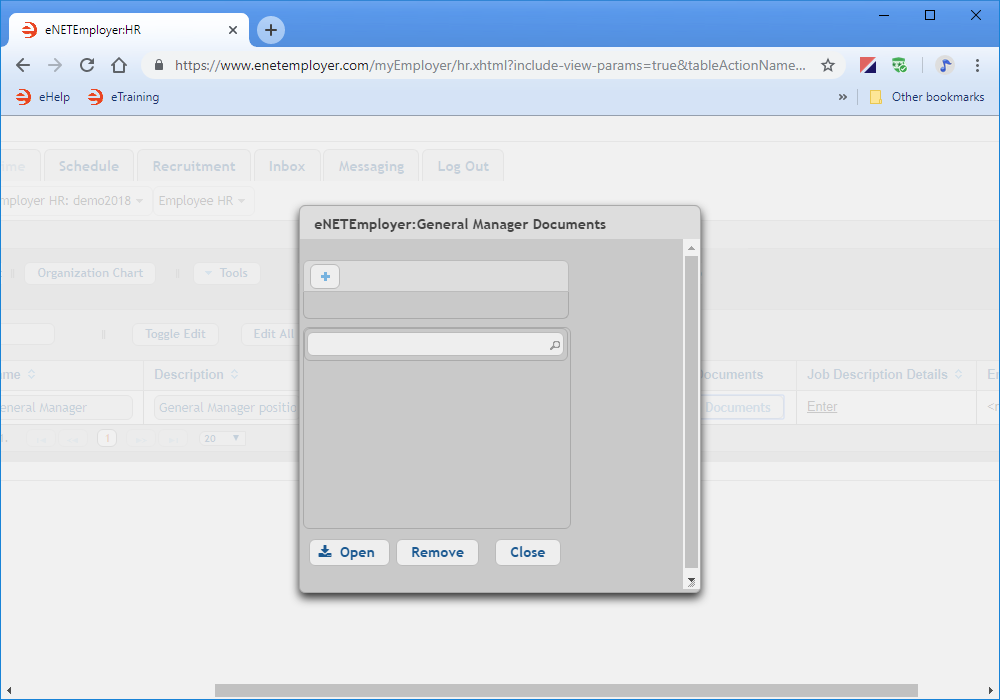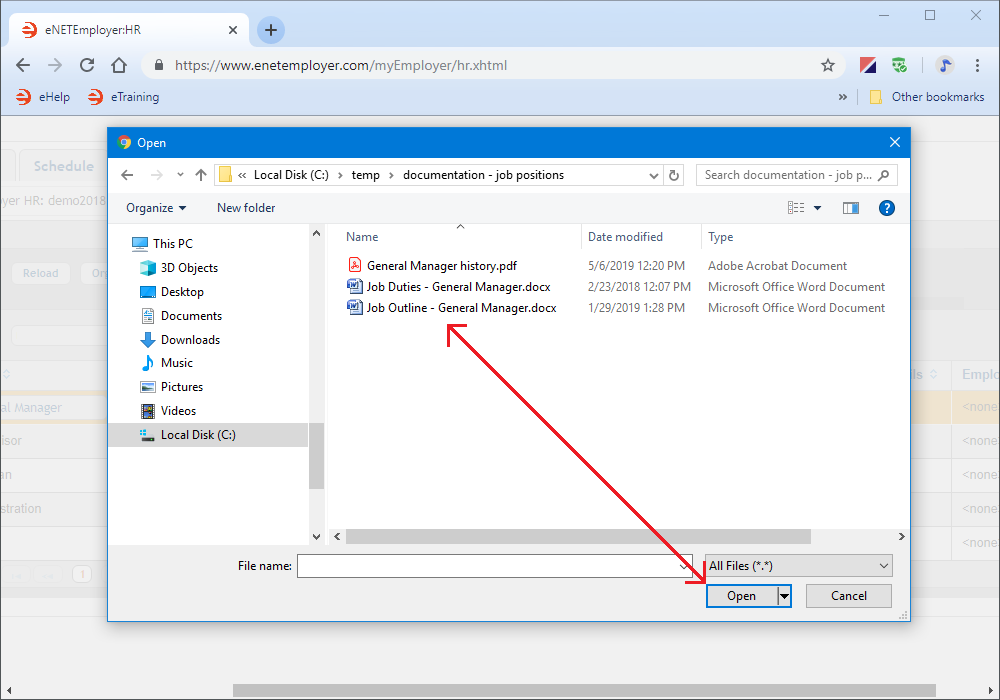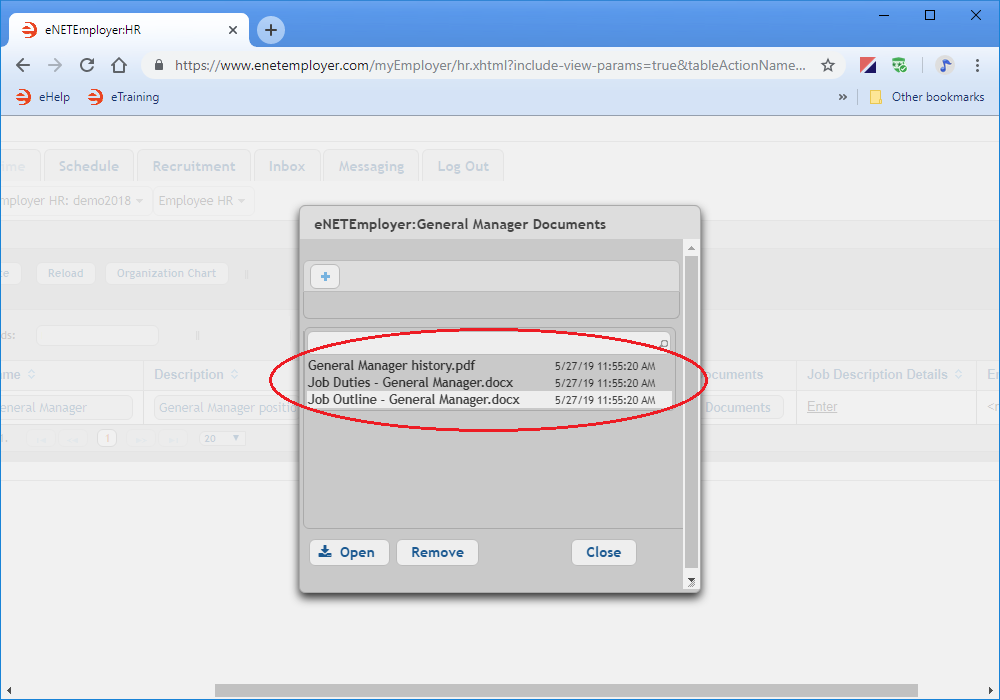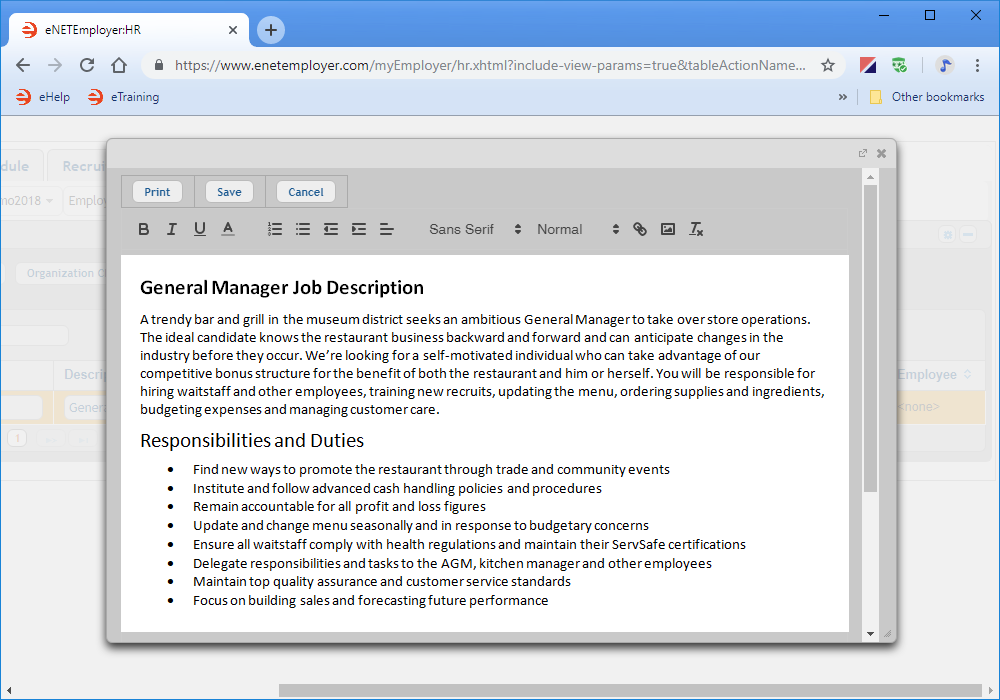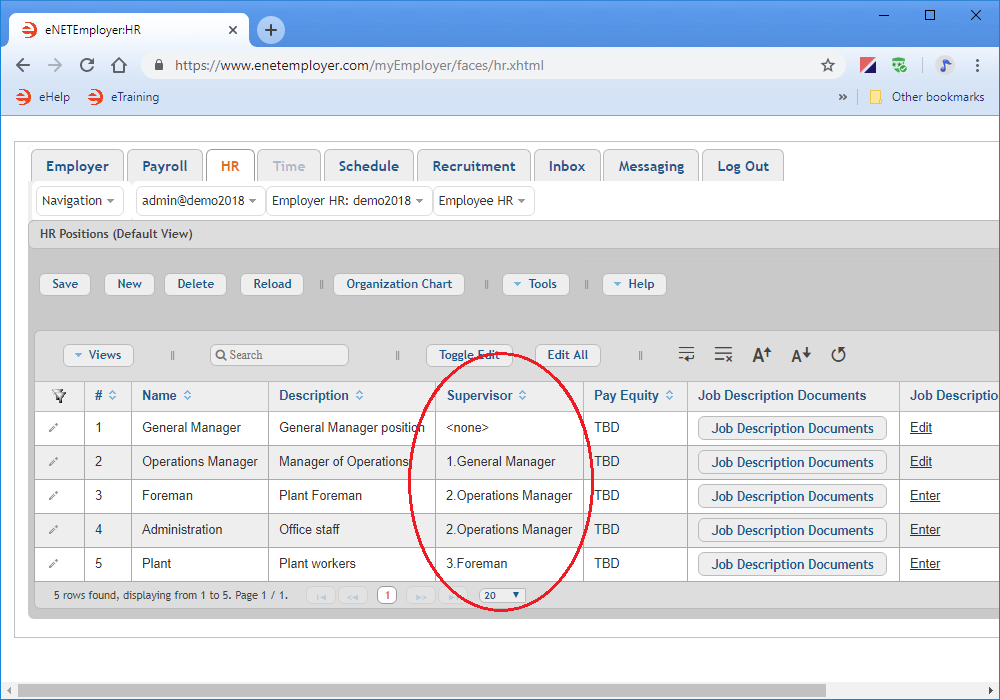Help Toolbar (select a button to browse other online help sections) Home Tutorials Resources Search Tabs & Menus Button Bar Table & Data Display |
Create an Employee Position
This tutorial will show you how to create HR positions - the records that control employee processing based on the type of work each person performs. Positions are shared across all program modules that support this feature. This includes the HR module, the Recruitment module and the Scheduling module.
This tutorial has two parts:
NOTE: Click on the images below to view them at full size
To Add a Job Position:
You can add positions from multiple program locations: Positions can be created from within the HR, Recruitment and Scheduling tabs. Regardless of the location you choose, your position changes will be the same as they share the same database. |
- From the HR tab, open the Employer HR - HR Positions screen where you can define job positions for your employees.
- Choose the New button to insert a blank position row in the table.
- Use the Name cell to enter a descriptive name for the position and then move to the Description cell and enter a brief description for the position.
- Select the Job Description Documents button to open a window where you can attach documents and files that pertain to the current job position. This can include PDFs, word processing documents, spreadsheets and images.
- When the Documents window appears, select the "+" (plus sign) icon to display the Open dialog box, and then use this window to navigate to the location of the document(s) that you wish to add.
Example: In Fig. 03 below, we see several documents that relate to the General Manager job position. - Select one or more documents as needed, and then choose the Open button. This adds the selected document(s) to the Documents window.
- Select the Close button to exit the Documents window and return to the Positions screen.
- Move to the Job Description Details cell and click on the Enter hyperlink. This opens a window that allows you to enter detailed information about the position.
- Enter the job details as needed (e.g. the job's general outline and responsibilities, required qualifications or skills, a salary range). You can also paste content into the window from another program or document (e.g. word processor, spreadsheet, web page).
- When the job details are complete, choose the Save button to close the pop-up window. This returns you to the main screen where the cell's original hyperlink has been replaced with the word "Edit" to indicate that you can perform further changes to this description when needed.
- Choose the Save icon (the Check Mark icon at the left side of the row) to accept your changes. This action saves the changes for the row and takes you out of Edit Mode.
We will skip over the Supervisor cell for now since the General Manager position is the top level person to which every other position reports. When we create other positions, we will use this cell to assign the supervisors as needed. We will also skip over the Pay Equity cell as this feature is still under development.
Now that you now how to create a position, let's move to the next section of this tutorial and learn how to assign a supervisor to a position.
To Assign a Supervisor to a Position:
Many job positions will have a hierarchy that sees a person in one position reporting to a supervisor. This section of the tutorial will show you how to enter a second position, and then to assign a supervisor to which the employee reports.
- Choose the New button to insert a blank position row in the table.
- Use the Name, Description, Document and Job Description cells to define the details for the position.
- Move to the Supervisor cell and then click on the downward-facing arrow to display a drop-down list of other positions that have been added. If you have completed the first section of this tutorial, you will see the General Manager position that we created earlier.
Example: In Fig. 06 below, we have created a second position entitled "Operations Manager". Note: We also see a second position that has a question mark for its name (because it refers to the position that you are currently adding - the question mark indicates that the position has not yet been saved). - Select the General Manager position from the drop-down list. This closes the list and assigns the General Manager as the supervisor for our new Operations Manager position.
- Save the row when you have completed the changes.
- Repeat the preceding 4 steps to add new positions as needed to support your company hierarchy.
Example: In Fig. 08 below, we have added a total of five sample positions. Each position reports to a superior, with the General Manager being the top of the hierarchy. - Save the changes to each row when you are complete.
This completes the tutorial on adding HR positions. As mentioned at the start of this tutorial, HR positions are used in a number of tabs including the HR module, the Recruitment module and the Scheduling module. Regardless of the tab you are in when you make a position change, the changes will be shared to the Positions screen across all modules.
To learn how to assign these position records to your individual employees, refer to the Assigning Employee Positions tutorial.
See Also:
